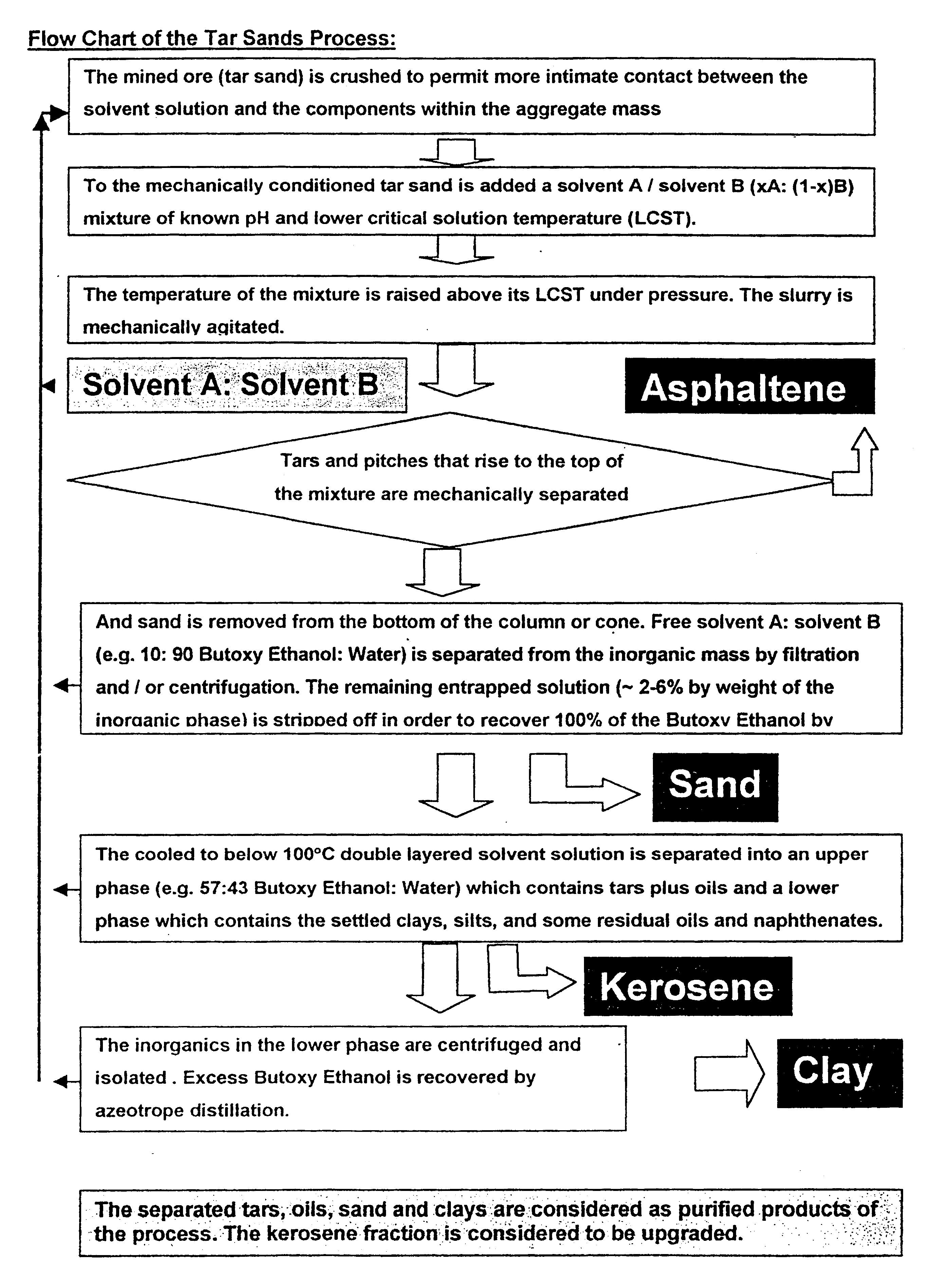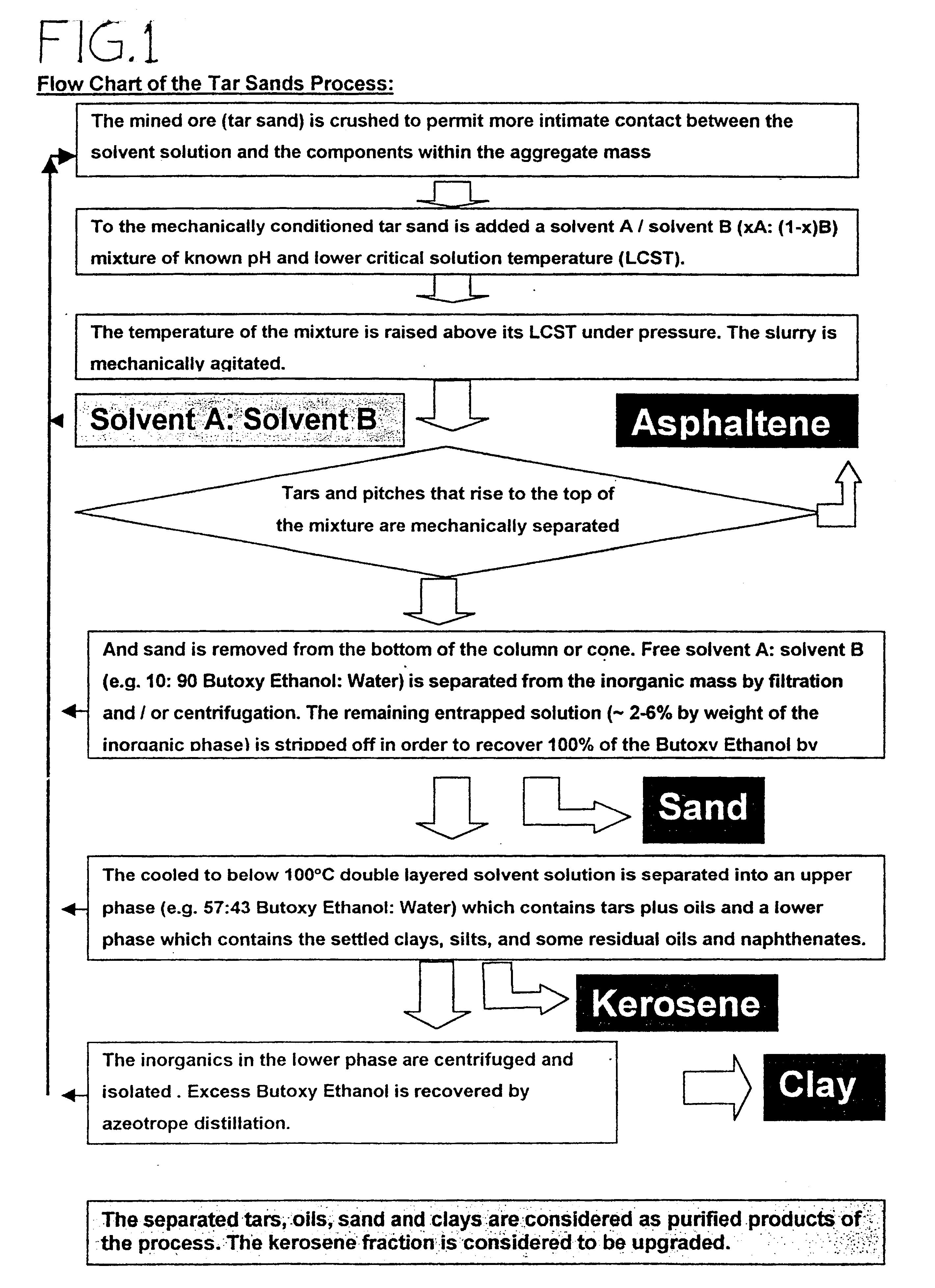Separation of tars, oils and inorganic constituents from oil bearing sands or shales
a technology of oil bearing sands and aggregates, which is applied in the field of separation and isolation of oil bearing sand aggregates, can solve the problems of large quantities of tailings, inability to separate bitumen, and inability to achieve low yields (54-92%)
- Summary
- Abstract
- Description
- Claims
- Application Information
AI Technical Summary
Benefits of technology
Problems solved by technology
Method used
Image
Examples
Embodiment Construction
) To a 6-12% by weight sample of tar sand add an equivalent weight of greater than 10% by volume Butoxy Ethanol in Water. The solvent mixture may contain up to 0.75% of sodium hydroxide and meta sodium silicate respectively.
2) The mixture is stirred and a stream of air introduced while being heated above 40.degree. C.
3) Heating the mixture above 40.degree. C. causes the liquid to separate into two layers or phases. The upper layer and lower layers are 57:43 and 10:90 solutions of Butoxy Ethanol: Water respectively.
4) Tars and pitches (Asphaltenes) whose densities are less than 0.99 g / cc rise to the upper layer. Those which are greater than 0.92 and less than 0.99 g / cc rise to the interface between the two layers.
5) The asphaltenes can now be isolated by filtering / centrifuging, those which are suspended in the liquid, and by skimming those surfaces on which they have been deposited.
6) The asphaltenes are further processed at the refinery level.
7) The sand found at the bottom of the c...
PUM
| Property | Measurement | Unit |
|---|---|---|
| temperature | aaaaa | aaaaa |
| temperature | aaaaa | aaaaa |
| temperature | aaaaa | aaaaa |
Abstract
Description
Claims
Application Information
 Login to View More
Login to View More - R&D
- Intellectual Property
- Life Sciences
- Materials
- Tech Scout
- Unparalleled Data Quality
- Higher Quality Content
- 60% Fewer Hallucinations
Browse by: Latest US Patents, China's latest patents, Technical Efficacy Thesaurus, Application Domain, Technology Topic, Popular Technical Reports.
© 2025 PatSnap. All rights reserved.Legal|Privacy policy|Modern Slavery Act Transparency Statement|Sitemap|About US| Contact US: help@patsnap.com



